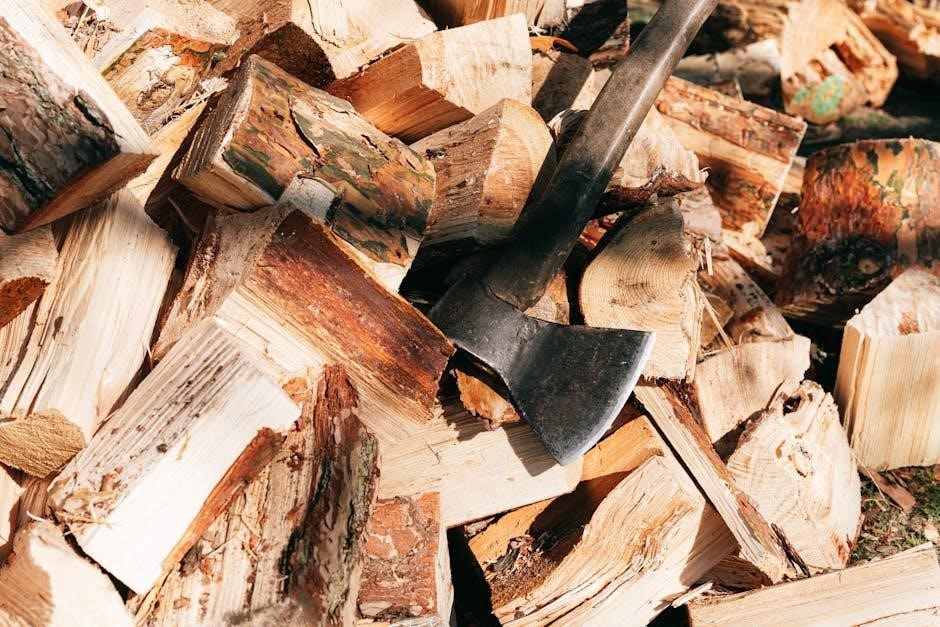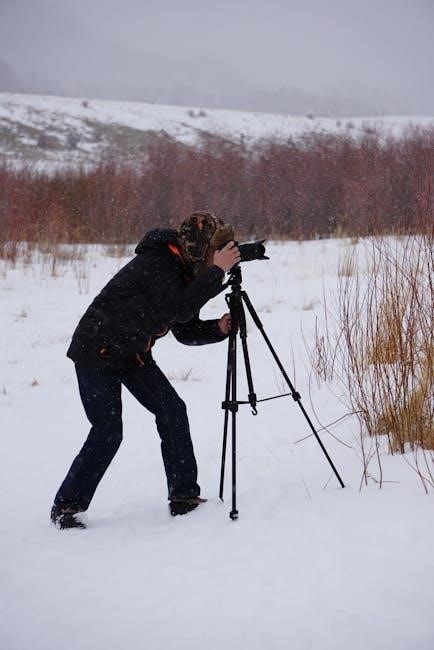La Crosse Technology offers diverse weather stations for home monitoring. These stations provide temperature, humidity, and multi-channel monitoring. They offer wireless transmission at 915 MHz from included sensors, ensuring convenience. The weather stations also display comfort levels inside your home.
Overview of La Crosse Technology and its Weather Products
La Crosse Technology provides various weather monitoring solutions, including weather stations, clocks, and thermometers. Their weather stations are designed to offer real-time backyard weather data, incorporating features like animated color forecasts. Many models support wireless connectivity, allowing for remote sensor data transmission. The La Crosse View app enhances functionality, enabling users to monitor conditions like wind speed, rainfall, and humidity.
The product line includes wireless wind and weather stations, offering comprehensive environmental data. These stations often feature additional sensors for specialized measurements. La Crosse Technology aims to provide accurate and reliable weather information for home and personal use, catering to diverse needs with various products and accessories.
Their products are known for user-friendly interfaces and clear data presentation.

Understanding the Transmitter in La Crosse Weather Stations
The transmitter in La Crosse weather stations sends outdoor data. It communicates wirelessly at 915 MHz to the main unit. Proper setup and placement are vital for accurate readings. Battery life impacts transmitter performance.
The Role of the Transmitter in Data Collection
The transmitter is a crucial component in La Crosse Technology weather stations, responsible for gathering and transmitting essential outdoor environmental data. It collects information such as temperature and humidity, and in some advanced models, wind speed and direction. This data is captured by the transmitter’s sensors and then wirelessly transmitted to the main weather station display unit inside your home. Without the transmitter, the weather station would only be able to provide indoor readings, limiting its overall usefulness. Ensuring the transmitter is functioning correctly and properly positioned is key to receiving accurate and up-to-date weather information, allowing you to make informed decisions about your day.
Frequency of Wireless Transmission (915 MHz)
La Crosse Technology weather station transmitters primarily operate on a wireless frequency of 915 MHz. This specific frequency band is chosen for its reliable performance and ability to transmit data over a reasonable distance, typically up to 330 feet (100 meters) in open areas. The 915 MHz frequency allows for effective communication between the outdoor transmitter and the indoor weather station console. This frequency also helps to minimize interference from other common household devices that operate on different frequencies, ensuring more consistent and accurate data transmission. Understanding the 915 MHz transmission is crucial for optimal placement and troubleshooting potential connectivity issues, as obstructions can affect signal strength.
Setting Up Your La Crosse Weather Station Transmitter
Setting up your La Crosse transmitter involves battery installation and initial signal reception. Ensure proper polarity when inserting batteries. Within two minutes, the weather station should display outdoor data from the transmitter.
Battery Installation Guide
Powering your La Crosse Technology weather station transmitter with fresh batteries is essential for optimal performance. Locate the battery compartment on the back or bottom of the transmitter. You’ll find a cover or latch securing the battery compartment. Open the compartment and insert the correct type of batteries, usually AA, ensuring proper polarity.
Avoid using super, ultra, max, heavy-duty, or rechargeable batteries, as these can affect performance. Once batteries are installed, securely close the compartment. When replacing batteries, a low battery icon appears on the LCD. Ensure the batteries are correctly installed in the remote sensor. This maintains the consistent transmission of data, such as temperature and humidity readings, to the weather station for accurate monitoring.
Initial Setup and Signal Reception
After installing batteries, initial setup is crucial for optimal signal reception. Within 2 minutes of powering up the transmitter, ensure proper alignment with the weather station. Wireless transmission occurs at 915 MHz, offering a range of over 330 feet. Position the weather station within this range, avoiding obstructions.
Signal reception intervals occur every 4 seconds; avoid opening the battery cover during this time to prevent false resets. The station automatically searches for the transmitter signal; wait 15 minutes for initial synchronization. Inserting batteries into additional transmitters should be done promptly when prompted by the station. Channel icons indicate successful reception from each transmitter, ensuring comprehensive data collection from multiple locations.

Troubleshooting Transmitter Issues
Connectivity problems can arise with La Crosse transmitters. Common issues include signal loss and low battery indicators. Addressing these promptly ensures accurate weather data. Check placement and replace batteries to maintain optimal performance.
Addressing Connectivity Problems
When your La Crosse Technology weather station struggles to receive data, several factors could be at play. Initially, ensure the transmitter and the weather station are within the specified wireless range, typically around 330 feet. Obstacles like walls can impede the 915 MHz signal. Repositioning the transmitter or weather station might improve reception.
Verify that the batteries in both the transmitter and the weather station are fresh and correctly installed. A low battery can significantly weaken the signal strength. If using multiple transmitters, confirm each is properly paired and set to a unique channel on the weather station.
External interference from other electronic devices operating on similar frequencies can disrupt the signal. Keep the weather station and transmitter away from potential sources of interference. Finally, avoid opening the battery cover during signal reception, as this may cause a false reset.
Low Battery Indicators and Replacement
Your La Crosse Technology weather station is designed to alert you when battery replacement is needed. A low battery icon will appear on the LCD of both the main unit and the transmitter, signaling it’s time for action. Prompt battery replacement ensures continuous and accurate data transmission;
To replace the batteries, locate the battery compartment on the back or bottom of the transmitter and the weather station. Open the compartment and remove the old batteries. Insert fresh batteries, typically AA or AAA, ensuring correct polarity. Avoid using rechargeable batteries, as they may not provide the optimal voltage.
After replacing the batteries, allow a few minutes for the units to re-establish communication. If the low battery icon persists, double-check the battery installation and consider trying a different set of batteries. Consistent low battery warnings might indicate a faulty transmitter.

Maintaining Optimal Performance
To keep your La Crosse weather station at peak performance, consider transmitter placement. Avoid interference to prevent false resets. Regular battery checks and proper mounting are crucial for accurate readings and longevity.
Proper Placement and Range Considerations
Optimal performance of your La Crosse Technology weather station hinges on proper placement. Ensuring the transmitter is within the specified wireless range, typically over 330 feet (100 meters), is paramount. Position the transmitter in an open area to maximize signal strength. Be mindful of obstructions such as walls, trees, and metal objects, as these can impede the 915 MHz wireless transmission.
Maintain adequate spacing between the weather station and the transmitter, adhering to the recommended distance mentioned in the manual. Correct mounting of the transmitter also plays a role. Furthermore, avoid placing the transmitter near sources of interference. By carefully considering these factors, you can ensure reliable and accurate data transmission.
Avoiding Interference and False Resets
To maintain the reliability of your La Crosse Technology weather station, it’s crucial to minimize interference. Keep the transmitter away from electronic devices, such as computers and microwaves, that could disrupt the 915 MHz signal. Additionally, avoid opening the battery cover of either the transmitter or weather station when the signal is being received, as this may cause a false reset.
Using recommended batteries is essential; avoid heavy-duty or rechargeable types. Power surges and static electricity can also trigger false resets. Ensure the station and transmitter are properly grounded. Taking these precautions will help prevent interruptions and ensure continuous, accurate weather data.

Advanced Features and Functionality
La Crosse Technology weather stations offer advanced capabilities such as multi-channel monitoring with multiple transmitters. Users can view individual sensors or auto-scroll through channels. Some models also support additional sensors for comprehensive environmental tracking.
Multi-Channel Monitoring with Multiple Transmitters
La Crosse Technology weather stations often feature multi-channel monitoring, enabling users to track data from several locations simultaneously. This is achieved through the use of multiple transmitters, each placed in a different area, such as various rooms in a home, a garage, or an outdoor garden.
These transmitters wirelessly send data back to the main weather station unit. Multi-channel monitoring is useful for gaining a comprehensive understanding of temperature and humidity variations across different environments. Some weather stations allow you to view data from individual sensors or automatically scroll through all channels.
By using this, individuals gain insights into the conditions in different parts of their home or property. Some models support up to three transmitting sensors, making it easier to monitor multiple locations with a single weather station.
Using Additional Sensors
La Crosse Technology weather stations often allow the integration of additional sensors to enhance their functionality. These additional sensors can expand the range of environmental data collected beyond basic temperature and humidity. Users can often add sensors to measure wind speed, wind direction, rainfall, and even soil moisture.
These sensors provide a more complete understanding of the surrounding weather conditions and environmental factors. Compatibility information for additional sensors can be found on the product details page of the La Crosse Technology website by searching for the model number of the weather station.
Using additional sensors allows for a more personalized and in-depth monitoring experience, tailored to specific needs and interests. By using additional sensors, users can track detailed information about outdoor conditions.
Restart Procedure
A restart procedure can resolve connectivity issues with La Crosse Technology weather stations. Begin by bringing both the display unit and the transmitter indoors, placing them 3-5 feet apart. Remove the batteries from both the display unit and the transmitter. It is advised not to use super, ultra, max, heavy-duty or rechargeable batteries.
After a few minutes, re-insert the batteries into both devices. This process allows the devices to reset and re-establish a connection. Wait approximately 15 minutes for the units to receive signals.
Avoid opening the battery cover of the transmitter when the 915MHz signal is received correctly. If issues persist, consult the device manual or La Crosse Technology support.
